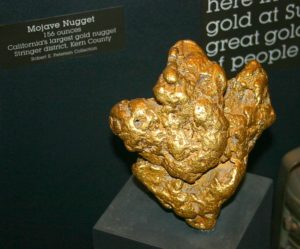 Gold rush had a deep impact on the history of United States. There have been many rushes. The California gold rush is the most famous. It all started in 1848 when James W. Marshall discovered traces of gold.
Gold rush had a deep impact on the history of United States. There have been many rushes. The California gold rush is the most famous. It all started in 1848 when James W. Marshall discovered traces of gold.
James wasn’t a professional miner. He was working in Sutter’s Mill in Coloma when he found a shiny object. Upon further inspection, it turned out to be gold. He told his boss about it.
He didn’t want to reveal this discovery to anyone. However, these kinds of news cannot be kept secret for a long time. A San Francisco newspaper confirmed that gold is present in the area. Immigrants soon flooded the region hoping to strike it rich.
The newcomers used simple technics like panning to mine for gold. Then they gradually shifted to industrialized mining. In total, 750,000 pounds of gold was extracted during this era.
Some of the unearthed nuggets were very special and rare. They were huge and they weighed over 100 pounds. In this article, I’ tell you about the largest and the most famous among them.
Carson Hill Nugget
This is the largest nugget that was discovered during the California gold rush. It weighed 160 pounds! It was discovered in November 1854 at the Morgan mine. At that time, it was worth around 43,000$.
Morgan mine was one of the most productive mines in California. Miners have barely to dig in order to find gold. Carson Hill was named after James H. Carson. He was a Second Sergeant in the US Army.
His regiment was at Monterey, California in 1847. When gold was found he deserted like many other soldiers wanting his share of the pie.
Carson Hill is registered as a historical landmark; its number is 274. In total, 26 million dollars worth of gold was extracted from this area.
Monumental Nugget
This nugget is literally monumental; it weighed 106 pounds. This specimen was discovered in Sierra County in 1869. There are many stories about the discovery of the nugget. Some of them feel like myths.
One of them seems to be plausible. Miners unearthed this piece of gold after seeing a shiny object on the ground on their way to work. A portion of it was partially uncovered due to rain. A replica of the Monumental Nugget is displayed at the Kentucky Mine Museum.
Fricot nugget
The Fricot nugget was discovered by William Russell Davis in August 1865. He found it while mining in El Dorado County, California. This nugget is massive. It weighs 201 troy ounces (13.78 pounds!).
Surprisingly, it was surrounded by smaller nuggets that weigh 12.1 pounds in total. Extracting this massive amount of gold wasn’t an easy task. The Fricot nugget was buried 200 feet underground.
William kept the gold piece for several years until he finally decided to sell it to Jules Fricot (thus the name).
This nugget was displayed in various exhibitions around the world, most notably in Paris in 1878.
It then disappeared for a while. Until in 1943, an employee at the California state division of mines found it in a bank’s safe deposit box.
The bank manager knew about the nugget and he knew the Fricot family well. But he never thought that it was stored a few feet from his office for all of this time. The employee convinced Jules’ daughter to donate the specimen to the California State Mining and Mineral Museum. The nugget is proudly displayed there.
Large nuggets like this one were common during the gold rush. However, they were simply melted down and refined to be turned into gold bars. The Fricot Nugget was special. It is the largest surviving crystalline specimen from the gold rush era and one of the largest in the world.
In 2012, a group of men broke into the museum. They managed to steal 1 million dollars worth of gold and gems. But they failed to steal the Fricot nugget. It was kept in a special vault. Its doors automatically shut down after the alarm was triggered.
The gold rush was long over. But this doesn’t mean that all of the large nuggets were discovered. There is still more to be found.
Back in the old days, miners used simple tools like pans, shovels, and picks… Thanks to technological progress, gold can still be found in spots that were be mined to death. Recently, in 2014, a nugget that weighs over 5 pounds was discovered using a handheld detector.
It was named the Butte nugget after the county where it was discovered. It was sold for somewhere around 400,000$; And unlike the Fricot nugget, it has no quartz content. The Butte nugget was only 12 inches under the surface!
Another one was found in 1978 in Randsburg, California. It weighs more than 10 pounds. Randsburg was a mining village. It was abandoned after gold became scarce.
So if you are looking for gold like the good old days, visit ghost towns. What you are going to find there is even more important than the material treasure. These towns are time capsules. They help you get a sneak peek of how the first settlers used to live. Everything is frozen in time. Everything has a story to tell.
Take a moment to imagine their daily life and how crowded the streets were. This will help you visualize the impact the gold rush had on the American history.
